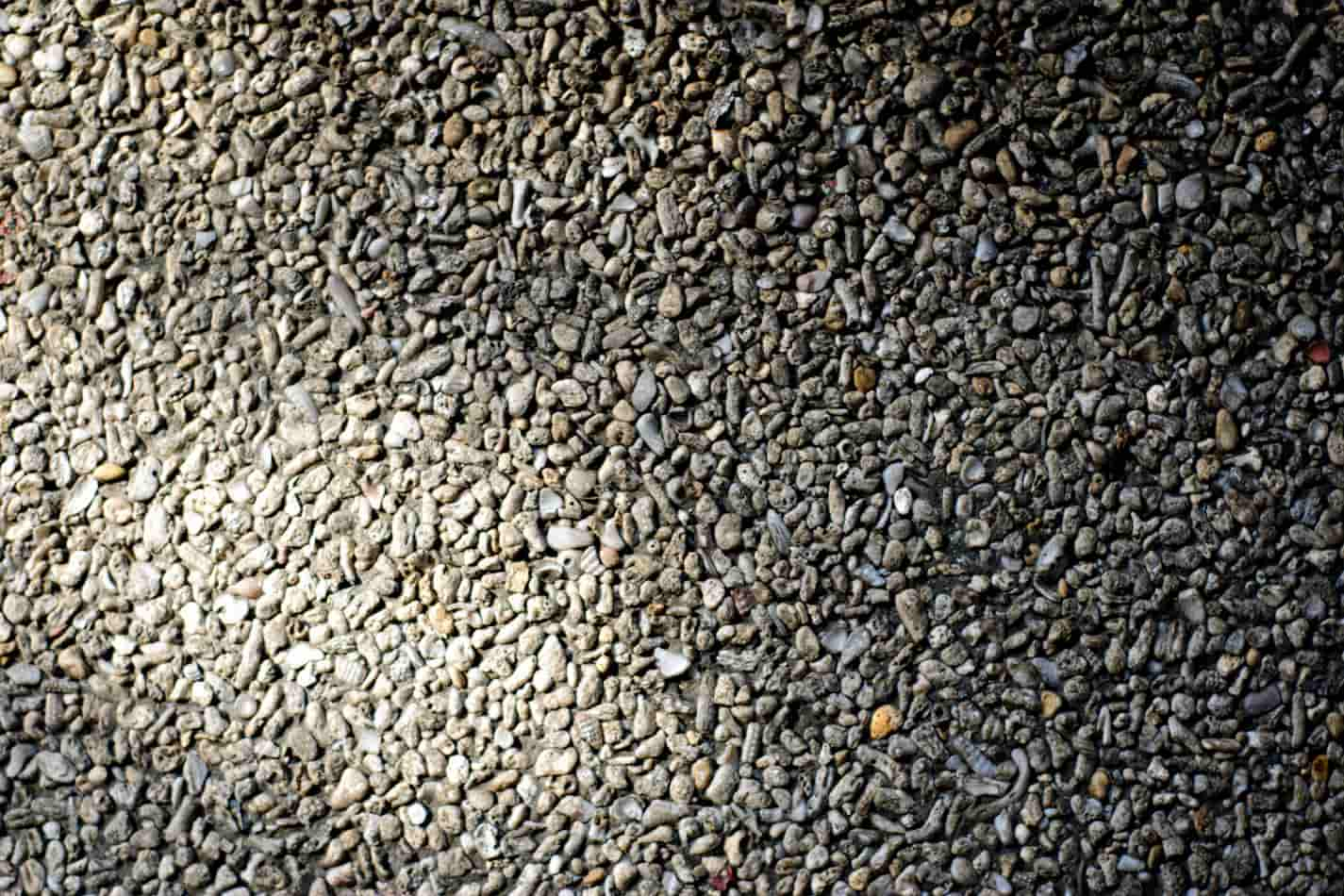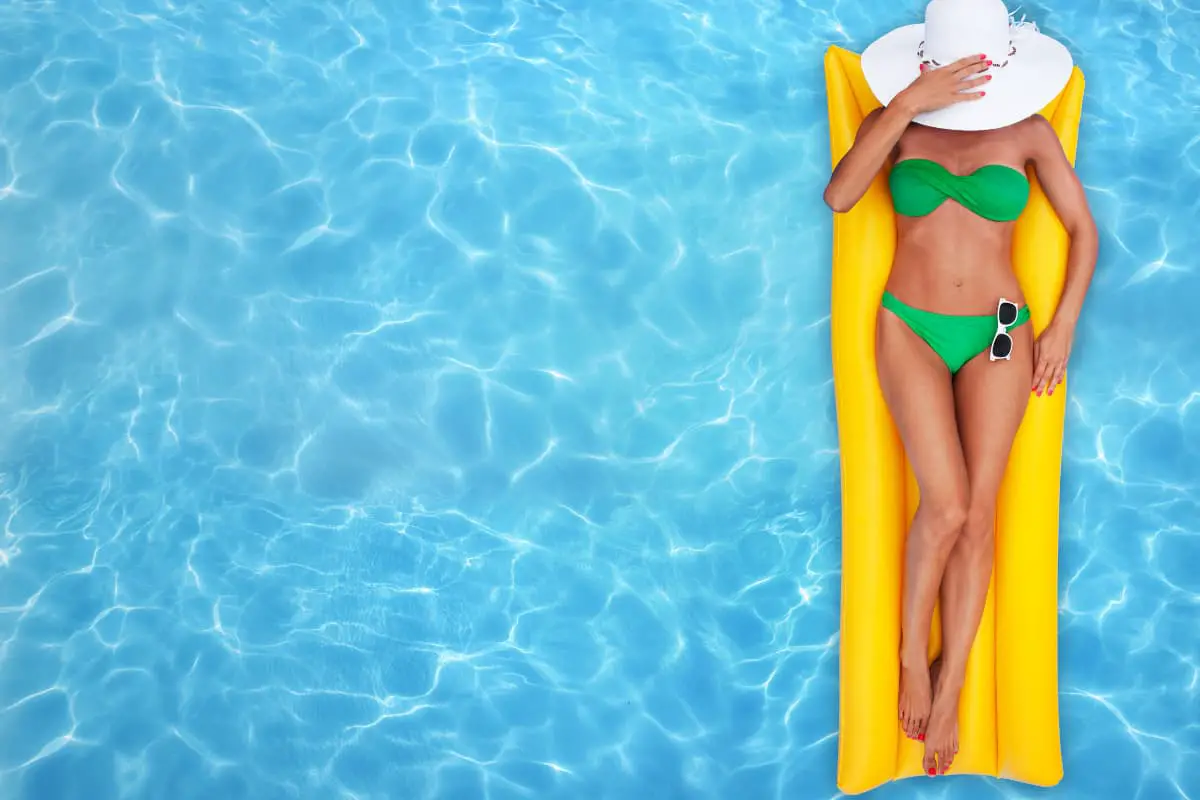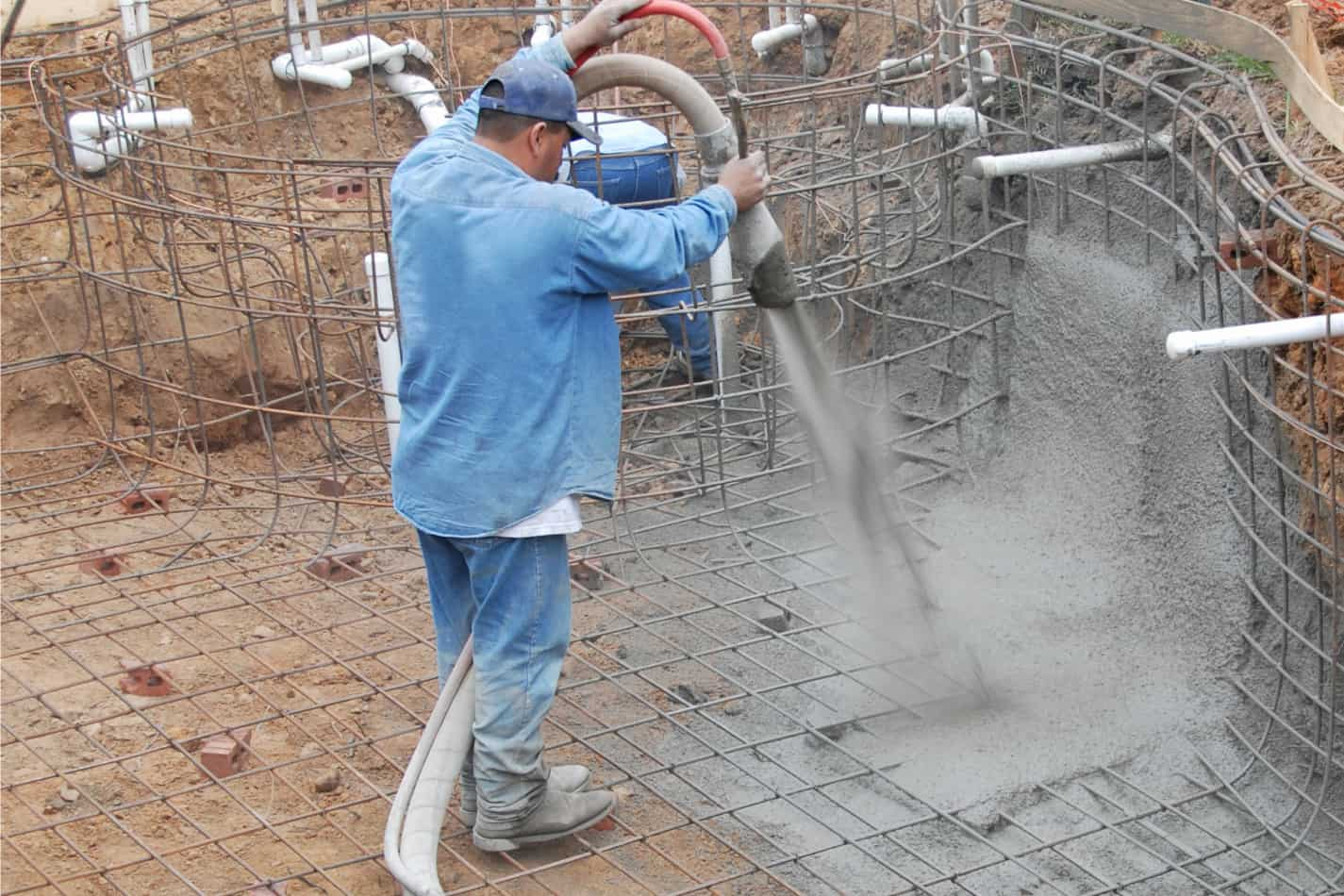Pool Finish: Why You Should Add a Pebble Finish

As an Amazon Associate I earn from qualifying purchases.
Pool finish comprises solid concrete (cement), sand, and water, and it’s embellished with pebbles, quartz, colored glass beads, or river stones, among other things. The texture of a pebble pool finish might be rough or smooth (polished Aggregate).
However, it can be challenging to decide which finish pick for your dream swimming pool. The finish is your pool’s most significant design feature. And your pool’s aesthetics, durability, and overall cost will all be influenced by the finish you choose.
This article will present a quick rundown of the most common pool finishes and their characteristics and suggest reasons you should choose a pebble finish. Read on to learn more.

What is a pebble finish pool?
It is a mixture of hydraulic cement and polished stone pebbles that make up a pebble surface. After the pool has been concreted, the finishing process begins.
The mixture is applied pneumatically, then hand-wiped or water-blasted to uncover the top layer of pebbles.
Reasons why you should add a pebble finish
When it comes to pool finishes, you’ve probably realized you have a lot of alternatives.
Pebble finishes offer various design options, longevity, low maintenance, and the avoidance of issues like mottling and blotchiness.
Color Options & Custom Finishes
Many homeowners want to add texture and color to their pool when it comes to pool remodeling. Depending on the pebble finish, you can create a range of styles.
Longevity
Pebble finishes have a longer life span than many other finishes. It can endure up to 25 years on average.
Because traditional plaster finishes are porous and subject to cracking and chipping, they must be updated every eight to twelve years.
A pebble finish is a fantastic alternative for homeowners trying to balance cost and material life expectancy for beauty and endurance.
Low-maintenance
Maintaining water quality and chemical balance is critical like all else linked to your pool. Generally speaking, a pebble finish is stain-resistant.
In comparison to traditional plaster surfaces, it also requires less cleaning. It’s also easy to clean because the stones are non-slip.
If you choose a pebble finish, pay close attention to your water’s calcium hardness (CH) levels. Calcium and mineral buildup can harm the finish if appropriate chemistry isn’t maintained.
Calcium scale or crystalline accumulation of inorganic components can occur over time. It’s difficult to remove; draining the pool and using an acid wash is required.
While a pebble finish is low maintenance, water quality and chemical balancing must be monitored.
Size of Pebbles
Another element to consider is the smooth quality of the pebble finish. They are often naturally tumbled to avoid snagging bathing suits or chafing skin when swimming.
The finer the polish, the smaller the pebble. Pebbles and larger aggregates can be a touch abrasive. This is referred to as “texture” in the business.
Smaller Aggregate is best for pools where sports or active youngsters are played when choosing the texture of your pebble finish.
While it gives the feet some traction, it’s gentler on sensitive skin.
Mottling Is Less Visible
Mottling describes the spots or scars that appear when the dye is applied to pool plasters or quartz finishes.
Mottling can range from mild to severe and varies from pool to pool due to differences in curing durations, amount of dye used, and weather conditions during application. While most finish mottle, a pebble finish mottles less.
Pebble finishes save time and money in the long term since they are stain-resistant, anti-slip, and non-porous. As a result, you won’t have to brush as frequently.
On the other hand, calcium buildup might occur if chemical upkeep is neglected. We always recommend testing the water’s chemical balance twice a week and making sure it’s between 7.4 and 7.5. Water chemistry can also cause scale buildup, which requires draining the pool in most situations.
What are the Most Common Pool Finish?
Plaster finish.
Plaster is one of the oldest, most popular, most commonly utilized interior finishing materials. A plaster finish directly applies solid concrete (cement), sand, and water into the pool hollow.
As a result, the pool has a modest but elegant appearance. It’s tough, waterproof and resistant to chemical concentrations that normally ruin the surface.
A plaster pool finish is an excellent choice if you’re on a budget. It is projected to cost roughly $3.60-$4.00/foot to install, making it the most affordable of all pool coatings.
The plaster pool finish is fairly robust for this price range, lasting five to seven years before any signs of chipping or etching appear. It’s very simple to put together, and you can pick from various colors.
On the other hand, family members with sensitive skin may find the rough surface bothersome.
A plaster finish may not be ideal for you if you aren’t keen on frequent cleaning. Because of its limited algae resistance, this style of pool finish necessitates weekly care.
Aggregate aka Pebble Finish.
Compared to normal plaster, the aggregate finish is a higher quality of concrete pool finish.
It’s made up of solid concrete (cement), sand, and water and embellished with pebbles, quartz, colored glass beads, or river stones, among other things.
The texture of an aggregate pool finish might be rough (Exposed Aggregate) or smooth (Smooth Aggregate) (Polished Aggregate).
An aggregate finish is slightly more expensive than a plaster finish, costing between $4.70 and $5.00 per foot.
However, it has a longer lifespan; quartz can endure for at least seven years, while pebbles can remain for ten to twenty years. Because of its innate algae resistance, it also requires less upkeep.
Only the exposed aggregate finish has significant downsides since it can be painful to walk on and house calcium buildup over time.
A polished aggregate finish is your best option if you want to avoid these drawbacks. However, whatever type of aggregate finish you choose will look better than basic plaster.
Tile finish
Tile is the most lasting and the most expensive of the many pool finishes. Most pool owners pick this finish despite the high cost because it requires the least amount of upkeep.
It also has the most design, quality, size, texture, and shape options.
Conclusion
Customized swimming pools are becoming increasingly popular as a home improvement project, and pool pebble finishes are becoming increasingly fashionable.
If you were wondering if you should add a pebble finish to your pool, now you know what a pebble surface is and how it may improve the aesthetics and functionality of your pool.
So go ahead and start planning the design you want to create the elegant backyard sanctuary of your dreams.
Thanks for reading to the end, and as always, we wish you the best in your effort towards living your dream life of fun.


